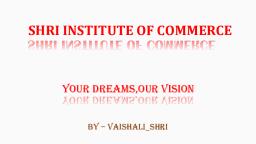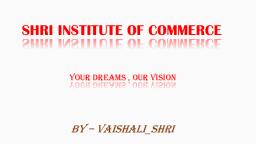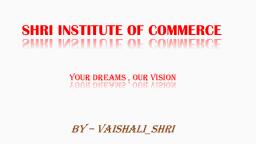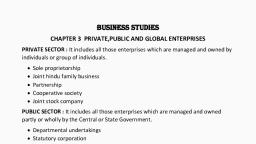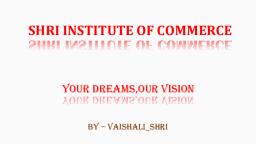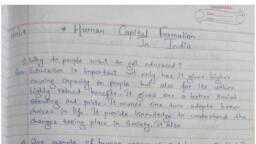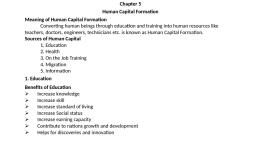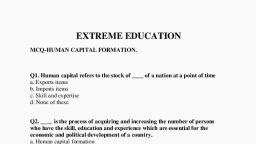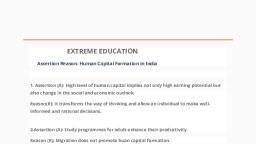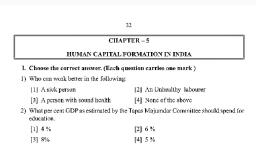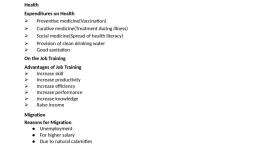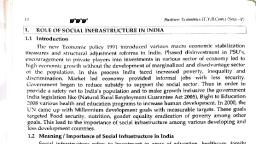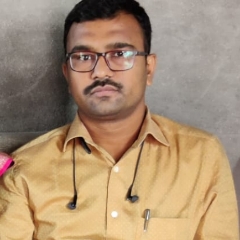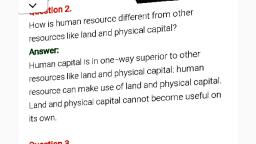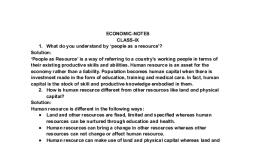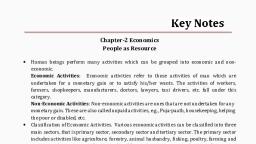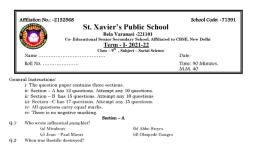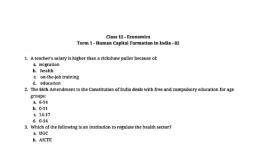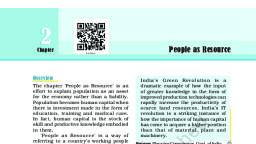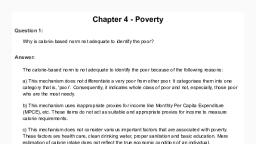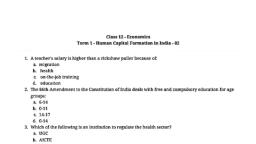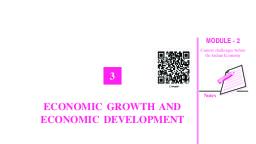Page 2 :
INDIAN ECONOMIC DEVELOPMENT, CHAPTER 5 HUMAN CAPITAL FORMATION, INTRODUCTION, The development of human resources means increase in the quality of human, beings,which helps in the process of growth and development of the economy., HUMAN CAPITAL FORMATION, It is the process of acquiring and increasing the number of persons, who have the, skills and experience which are essential for the economic and political development, of the nation., SOURCES OF HUMAN CAPITAL FORMATION, 1.Expenditure on education : Labour skill of an educated person is more than that of, an uneducated person which enables him to generate more income.Spending on, education by individuals is similar to spending on capital goods by, companies.Individuals invest in education to increase their future income and raise, the living standard.Education contributes to economic growth because :
Page 3 :
(a)Higher earning capacity, (b)Better social standing and pride, (c)Better choices, (d)Innovations, (e)Adaptations of new technology, 2.Expenditure on health : It is a source of human capital formation as it directly, increases the supply of healthy human force.Poor health and undernourishment, affects the quality of manpower.It is important to built and maintain productive, labour force and to improve quality of life of people.Forms of health expenditure :, (a)Preventive medicine called as vaccination., (b)Curative medicine., (c)Social medicine., (d)Provision of clean drinking water., (e)Good sanitation facilities.
Page 4 :
3.On the job training : It increases the skill and efficiency of the workers and leads to, an increase in production and productivity.It is a source of Human Capital Formation, as return of expenditure on such training in the form of enhanced labour, productivity., 4.Expenditure on migration : People migrate from one place to another in search of, jobs with higher salaries.Technically, qualified persons migrate to other countries, because of higher salaries that they may get in such countries.It is a source of human, capital formation as enhanced earnings in the migrated place is more than the, increase in costs due to migration., 5.Expenditure on information : It is incurred to acquire information relating to labour, market and other markets.Information is necessary to make decisions regarding, investments in human capital as well as for efficient utilisation of the acquired human, capital stock.
Page 5 :
IMPORTANCE / ROLE OF HCF, 1.Increases production : It raises the productivity and quality of production which, depends on technical skill of the people.Investment in human capital helps in, acquiring new skills and knowledge related to management of resources, technology, and production., 2.Innovative skills : Education provides knowledge to understand changes in society, and scientific advancements, which facilitates inventions and innovations.The, availability of educated labour force facilitates inventions ,innovations and, adaptation to new technologies., 3.Increases life expectancy : Health facilities and availability of nutritive food enables, people to live a health and long life., 4.Improves quality of life : The quality of population depends upon the level of, education,health of a person and skill formation acquired by the people.People start, living and enjoying higher incomes and more satisfying life.
Page 6 :
5.Control of population growth : It has been observed that educated persons have, smaller families as compared to illiterate families.So ,spread of education is necessary, to control the population growth rate., PROBLEMS OF HUMAN CAPITAL FORMATION, 1.Rising population : The continuous rise in population has adversely affected the, quality of human capital.It reduces per head availability of the facilities., 2.Insufficient resources : The resources allocated to the formation of human capital, have been much less than the resources required.Due to this reason, the facilities for, the formation of human capital have remained grossly inadequate., 3.Imbalanced resources : The resources have been diverted towards higher, education which is meant for few people as compared to primary and secondary, education.Due to this reason, general productivity of the economy has remained low., 4.Lack of proper manpower planning : There is an imbalance between the demand, and supply of human resources of various categories.The absence of such balancing, has resulted in the wastage of resources.
Page 7 :
5.Lack of science & technology : In respect of education, the performance is, particularly unsatisfactory in the fields of science and development of modern, technology., 6.Brain drain : People migrate from one place to another better job opportunities &, salaries.It lead to the loss of quality people like doctors,engineers etc., DIFFERENCE BETWEEN HUMAN CAPITAL AND HUMAN DEVELOPMENT, HUMAN CAPITAL, Human capital considers education and health, as a means to increase labour productivity., It is a narrow concept as it treats human beings, as a means to increase in productivity., , HUMAN DEVELOPMENT, In human development,education and health are, integral to human well – being., It is a broader concept as it considers human, beings as ends in themselves.According to, human development, human welfare should be, increased through investments in education and, health even if it doesn’t contribute in higher, labour productivity.
Page 8 :
DIFFRENCE BETWEEN PHYSICAL CAPITAL AND HUMAN CAPITAL, PHYSICAL CAPITAL, , HUMAN CAPITAL, , All those inputs which are required in the, process of production such as raw, materials,plant,machinery etc., , It refers to the knowledge,skills and efficiency of, human being in an economy at a particular point, of time., , It depreciates with the passage of time., , Depreciation in human capital can be reduced by, making continuous investments in education, and health., It is less mobile between countries., , It is more mobile between countries., , Physical capital like machinery can be separated Human capital like skills of a person can’t be, from its owner., separated from the owner., It can be built through imports., , It is done through conscious policy formulations.
Page 9 :
IMPORTANT DATES, Education Commission recommendation to spend at least 6% of, GDP on education, , 1964 – 66, , Tapas Majumdar Committee appointed by Indian Government, , 1998, , ‘Right to Education Act’ was enacted by the Indian Government to, make free education a fundamental right of all children in the age, group of 6 -14 years., , 2009, , India was declared a ‘Polio Free’ country by WHO, , 27th March ,2014

